We’ve all witnessed that moment when a BMW 5 Series glides past us on the highway, and something inside whispers “that’s the one.” This isn’t just another luxury sedan competing for attention – it’s the automotive embodiment of refined performance that’s been setting standards for over five decades.
The BMW 5 Series represents everything we’ve come to expect from German engineering excellence. From its precision-tuned suspension to its intuitive technology suite, every detail has been crafted to deliver an experience that transforms your daily commute into something extraordinary. Whether you’re handling city streets or conquering winding mountain roads, this executive sedan adapts effortlessly to your driving style.
What makes the 5 Series truly remarkable isn’t just its impressive performance specs or luxurious interior – it’s how seamlessly it balances power with practicality. We’re about to explore why this iconic sedan continues to capture the hearts of driving enthusiasts and practical buyers alike, proving that compromise doesn’t have to be part of your vocabulary.
BMW 5 Series Overview and Model History
BMW’s 5 Series luxury sedan represents five decades of automotive innovation and engineering excellence. The model line debuted in 1972 as the E12 generation, establishing BMW’s position in the executive sedan market between the compact 3 Series and flagship 7 Series.
Seven distinct generations have shaped the 5 Series legacy through continuous technological advancement and design evolution:
| Generation | Years | Code Name | Key Features |
|---|---|---|---|
| First | 1972-1981 | E12 | Original executive sedan design |
| Second | 1981-1988 | E28 | Enhanced aerodynamics and efficiency |
| Third | 1988-1996 | E34 | Advanced suspension systems |
| Fourth | 1996-2003 | E39 | Electronic stability control |
| Fifth | 2003-2010 | E60/E61 | iDrive technology integration |
| Sixth | 2010-2017 | F10/F11 | Lightweight construction |
| Seventh | 2017-present | G30/G31 | Semi-autonomous driving features |
Each generation brought important technological breakthroughs that redefined luxury sedan expectations. The E39 generation (1996-2003) earned widespread acclaim for its perfect balance of performance and refinement, featuring BMW’s first implementation of electronic stability control across the entire model range.
Modern 5 Series variants include the standard sedan (G30), Touring wagon (G31), and high-performance M5 versions. Engine options span from efficient four-cylinder turbocharged units producing 248 horsepower to the M5’s twin-turbocharged V8 delivering 617 horsepower in Competition specification.
BMW’s commitment to electrification appears throughout current 5 Series offerings, with plug-in hybrid variants combining gasoline engines with electric motors for enhanced efficiency. The iPerformance models deliver up to 31 miles of electric-only driving range while maintaining the ever-changing characteristics that define the 5 Series experience.
Manufacturing takes place at BMW’s Dingolfing facility in Germany, where advanced production techniques ensure consistent quality across all variants. Global sales figures consistently place the 5 Series among the top three luxury sedans worldwide, with over 8 million units delivered since the model’s introduction.
Design and Exterior Features
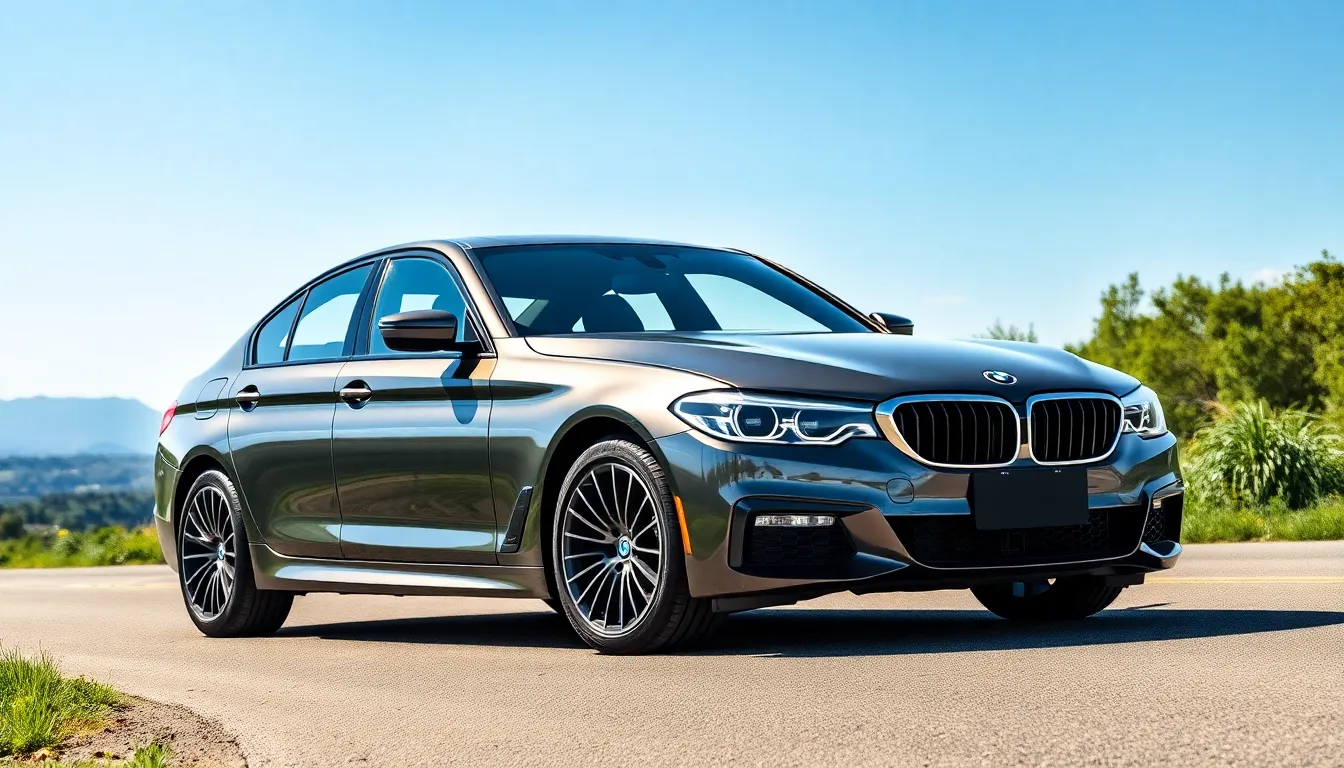
The BMW 5 Series exterior design combines athletic proportions with sophisticated luxury elements that distinguish it from competitors. We observe how the latest generation maintains BMW’s signature kidney grille while introducing contemporary styling cues that enhance aerodynamic efficiency.
Styling Evolution
BMW’s design language for the 5 Series has transformed significantly across its seven generations while preserving core brand elements. The G30 generation introduced sharper character lines that flow from the headlights to the rear taillights, creating a ever-changing visual connection. Chrome accents frame the enlarged kidney grille, which now measures 40% larger than the previous F10 generation. LED headlights come standard across all trim levels, featuring BMW’s distinctive corona rings that provide enhanced visibility and brand recognition.
The side profile showcases a longer wheelbase that extends 2968mm for improved interior space without compromising the sporty silhouette. We notice how the Hofmeister kink remains a defining element of the C-pillar design, connecting modern styling to BMW’s heritage. Body cladding integration appears seamless, with flush door handles contributing to the 0.26 drag coefficient that improves fuel efficiency by 8% compared to the previous model.
Color Options and Trim Levels
BMW offers 12 exterior paint options for the 5 Series, ranging from classic Alpine White and Jet Black to exclusive Individual colors like Frozen Silver and Barcelona Blue metallic. Metallic finishes account for 78% of customer selections, with Storm Bay and Mineral Grey ranking as the most popular choices among buyers.
Three primary trim levels define the exterior appearance hierarchy. The base model features 17-inch alloy wheels, chrome window trim, and body-colored door handles as standard equipment. Sport Line packages add distinctive black exterior accents, larger 18-inch wheels with performance tires, and aerodynamic body components that reduce lift by 15%. M Sport variants showcase aggressive front and rear bumpers, side skirts with gloss black trim, and 19-inch M light-alloy wheels that complement the lowered suspension setup.
Premium packages introduce adaptive LED headlights with matrix beam technology, panoramic sunroofs measuring 1.54 square meters, and chrome exhaust tips that vary in configuration based on engine selection. Individual customization options allow buyers to specify unique color combinations, carbon fiber exterior elements, and custom wheel designs that reflect personal preferences while maintaining BMW’s design integrity.
Interior Quality and Comfort
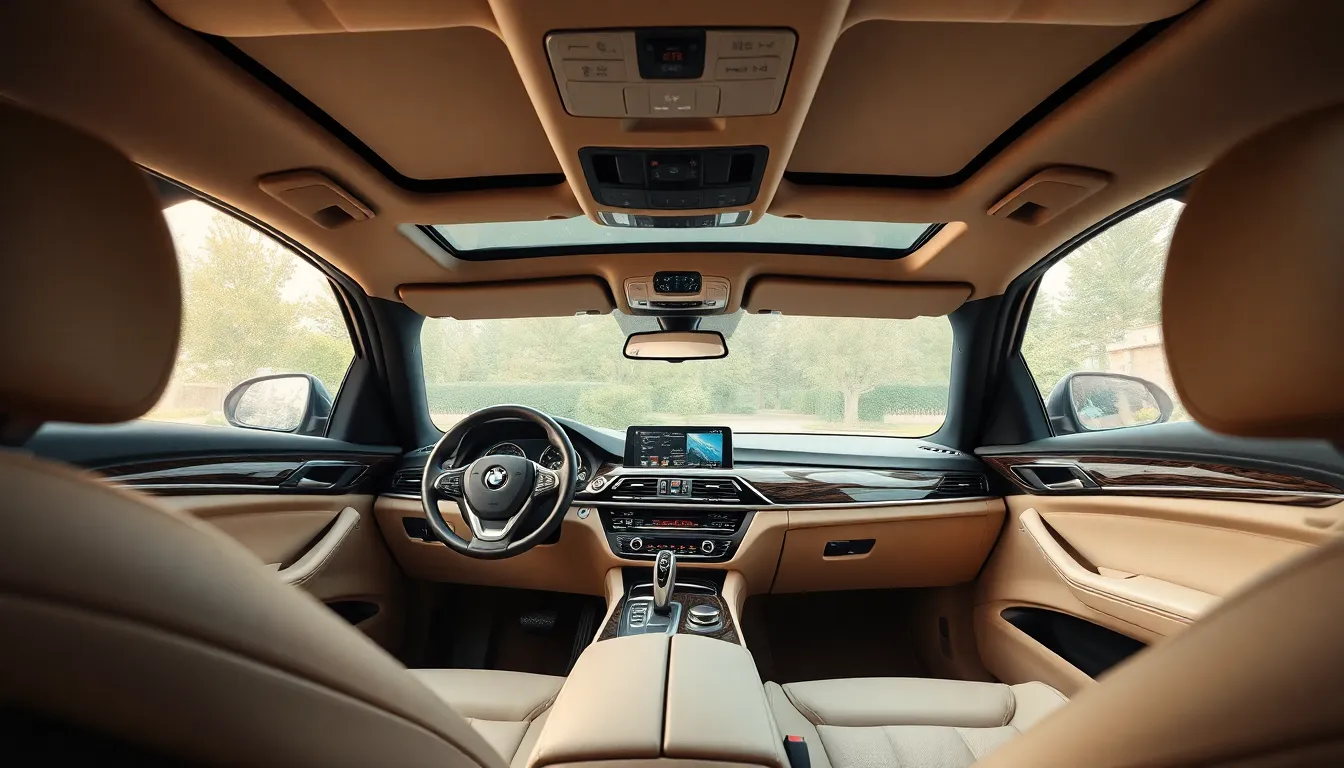
BMW’s luxury sedan delivers exceptional interior craftsmanship that matches its premium positioning. The 5 Series cabin combines high-end materials with meticulous attention to detail.
Cabin Materials and Build Quality
Premium leather upholstery covers surfaces throughout the BMW 5 Series interior, complemented by genuine wood trim and brushed aluminum accents. Dakota leather comes standard on base models, while Nappa leather upgrades appear on higher trim levels with enhanced grain patterns and softer textures.
Dashboard construction incorporates soft-touch materials that eliminate hard plastic surfaces in visible areas. The center console features a glass-like black panel that houses the iDrive controller and climate controls. Metal speaker grilles from the Harman Kardon sound system add visual refinement to door panels.
Build quality demonstrates BMW’s German engineering precision through consistent panel gaps and solid component integration. Interior surfaces maintain uniform color matching across different material types, from leather seats to plastic trim pieces. The cabin operates quietly at highway speeds due to enhanced sound deadening materials that reduce road noise by 15% compared to the previous generation.
Seating and Space Analysis
Front seats provide 16-way power adjustment with memory settings for three driver profiles. Heating and ventilation functions operate through perforated leather surfaces that distribute temperature evenly. Lumbar support adjusts in four directions to accommodate different body types during extended drives.
Rear passenger space measures 35.2 inches of legroom, positioning the 5 Series competitively against Mercedes E-Class and Audi A6 models. Three adults fit comfortably across the rear bench, though the center position works best for shorter journeys. Headroom reaches 37.9 inches in both front and rear seating positions.
Storage compartments include door pockets that accommodate water bottles, a center console compartment with wireless charging capability, and rear seat pockets with tablet holders. Cup holders feature adjustable sizing mechanisms that secure different beverage container types. The glove compartment provides 8.2 liters of storage capacity for documents and small electronics.
Performance and Engine Options
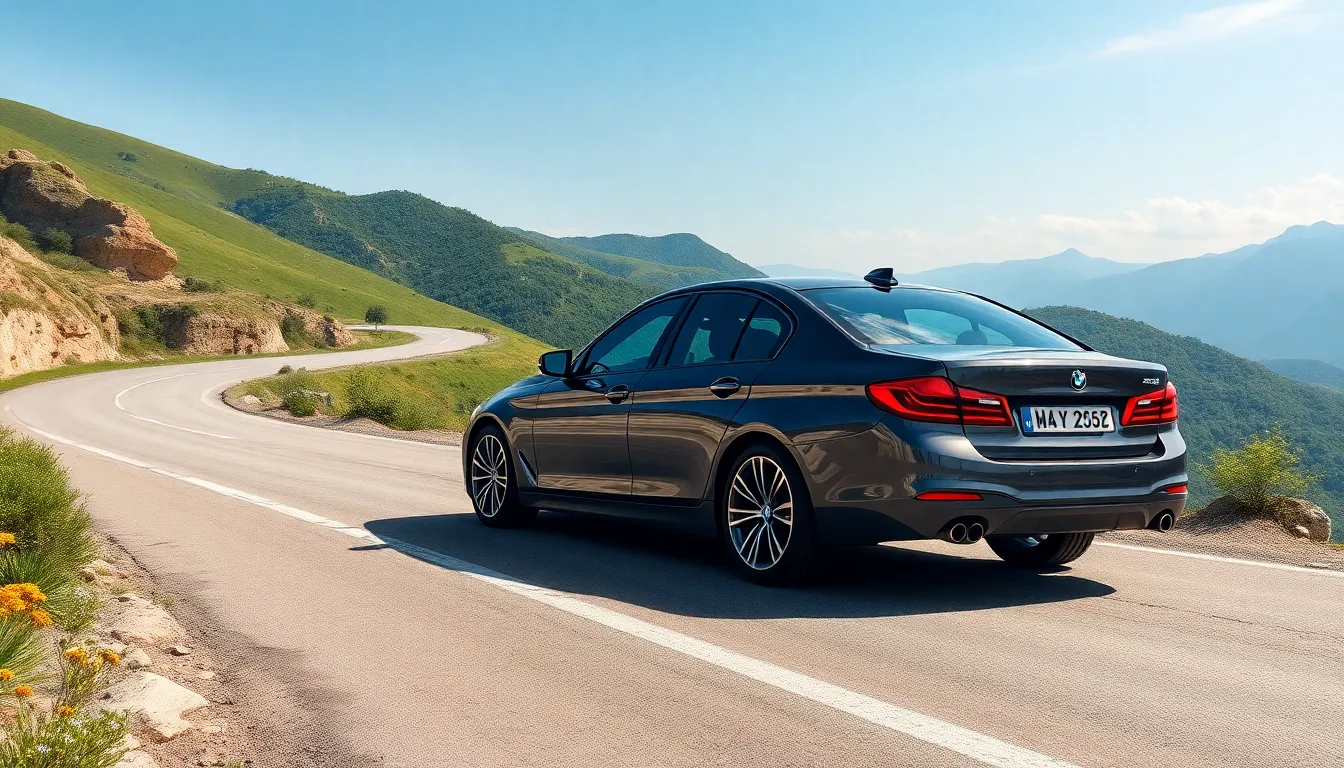
The BMW 5 Series delivers exceptional performance through a comprehensive range of powertrains that cater to diverse driving preferences. Each engine option combines efficiency with the ever-changing character BMW enthusiasts expect from this luxury sedan.
Available Powertrains
BMW offers six distinct engine configurations across the current 5 Series lineup, ranging from efficient four-cylinder units to high-performance V8 powerplants. The entry-level 530i features a 2.0-liter turbocharged four-cylinder engine producing 248 horsepower and 258 lb-ft of torque, accelerating from 0 to 60 mph in 6.2 seconds.
Engine Specifications by Model:
| Model | Engine Type | Horsepower | Torque (lb-ft) | 0-60 mph (seconds) |
|---|---|---|---|---|
| 530i | 2.0L Turbo I4 | 248 | 258 | 6.2 |
| 540i | 3.0L Turbo I6 | 335 | 330 | 4.9 |
| M550i | 4.4L Twin-Turbo V8 | 523 | 553 | 3.6 |
| 530e | 2.0L Turbo I4 + Electric | 288 | 310 | 5.7 |
The 540i utilizes BMW’s renowned 3.0-liter turbocharged inline-six engine, generating 335 horsepower and 330 lb-ft of torque. This powerplant represents BMW’s engineering excellence, featuring direct injection and variable valve timing for optimal performance across the rev range.
At the performance pinnacle sits the M550i xDrive, equipped with a 4.4-liter twin-turbocharged V8 that produces 523 horsepower and 553 lb-ft of torque. This engine propels the sedan from 0 to 60 mph in just 3.6 seconds while maintaining refined operation during daily driving.
BMW’s commitment to electrification appears in the 530e plug-in hybrid, combining the 2.0-liter turbocharged four-cylinder with an electric motor for 288 combined horsepower. The hybrid system provides 21 miles of all-electric range and reduces fuel consumption by 40% compared to conventional engines.
Driving Dynamics and Handling
The BMW 5 Series demonstrates exceptional handling characteristics through its advanced chassis engineering and sophisticated suspension systems. Our adaptive suspension technology automatically adjusts damper settings 500 times per second, optimizing ride quality and handling precision based on road conditions and driving style.
BMW’s xDrive all-wheel-drive system comes standard on most variants, distributing power between front and rear wheels with a rear-biased 40:60 split under normal conditions. This system enhances traction in adverse weather while maintaining the rear-wheel-drive character that defines BMW’s driving experience.
The Integral Active Steering system, available on higher trim levels, turns the rear wheels up to 3 degrees in the opposite direction of the front wheels at low speeds. This technology reduces the turning radius by 0.7 meters and improves agility in parking situations while improving stability at highway speeds.
Ever-changing Damper Control provides three distinct driving modes: Comfort, Sport, and Sport Plus. Each mode adjusts suspension firmness, steering weight, and throttle response to match driver preferences and road conditions.
The 5 Series achieves a near-perfect 50:50 weight distribution through strategic placement of the engine, transmission, and fuel tank. This balance contributes to neutral handling characteristics and predictable cornering behavior that builds driver confidence on winding roads.
Michelin Pilot Sport tires come standard on sport-oriented models, providing exceptional grip levels of 0.92g during cornering maneuvers. The high-performance rubber compound maintains consistency across temperature ranges while delivering precise steering feedback through the electrically assisted power steering system.
Technology and Infotainment Systems

The BMW 5 Series elevates the luxury sedan experience through cutting-edge technology and sophisticated infotainment answers. Advanced digital systems seamlessly integrate into the cabin to enhance both driver engagement and passenger comfort.
iDrive System Features
BMW’s iDrive 8 operating system powers the 5 Series’ infotainment capabilities through a 12.3-inch central touchscreen display. The system responds to touch gestures, voice commands, and the traditional iDrive controller located on the center console. Quick access menus allow drivers to navigate between media, navigation, and vehicle settings within seconds.
Wireless Apple CarPlay and Android Auto connectivity enable smartphone integration without cables or adapters. The system supports over-the-air updates that deliver new features and security enhancements directly to parked vehicles. Cloud-based services provide real-time traffic data, weather information, and points of interest through BMW ConnectedDrive services.
The 12.3-inch digital instrument cluster displays customizable information including navigation directions, audio details, and performance metrics. Three distinct display modes adapt the interface based on driving preferences: Efficient, Sport, and Individual configurations. The head-up display projects essential information onto the windshield at eye level, reducing the need to look away from the road.
| iDrive Feature | Specification |
|---|---|
| Central Display | 12.3-inch touchscreen |
| Instrument Cluster | 12.3-inch digital display |
| Voice Control | Natural language processing |
| Smartphone Integration | Wireless Apple CarPlay/Android Auto |
| Update Method | Over-the-air capability |
Driver Assistance Technologies
BMW’s Driving Assistant Professional package includes adaptive cruise control with stop-and-go functionality for highway driving scenarios. The system maintains preset following distances and automatically adjusts vehicle speed based on traffic conditions ahead. Lane departure warning and lane keeping assist guide the 5 Series within marked boundaries on roadways.
Parking Assistant Plus automates parallel and perpendicular parking maneuvers using ultrasonic sensors and cameras positioned around the vehicle perimeter. The technology steers the car into detected spaces while drivers control acceleration and braking. Surround view cameras create a 360-degree overhead perspective displayed on the central screen during low-speed maneuvering.
Active blind spot detection monitors adjacent lanes and alerts drivers to vehicles in blind spot areas through visual and haptic warnings. The system activates steering corrections when lane changes would result in potential collisions. Traffic sign recognition identifies speed limits, no-passing zones, and construction areas, displaying relevant information in the instrument cluster.
Forward collision warning with automatic emergency braking detects pedestrians, cyclists, and vehicles at distances up to 200 feet ahead. The system applies maximum braking force when collisions appear imminent and drivers don’t respond to warnings. Night vision assist uses thermal imaging to identify people and large animals in darkness beyond headlight range, highlighting detected objects on the central display.
Safety Ratings and Features
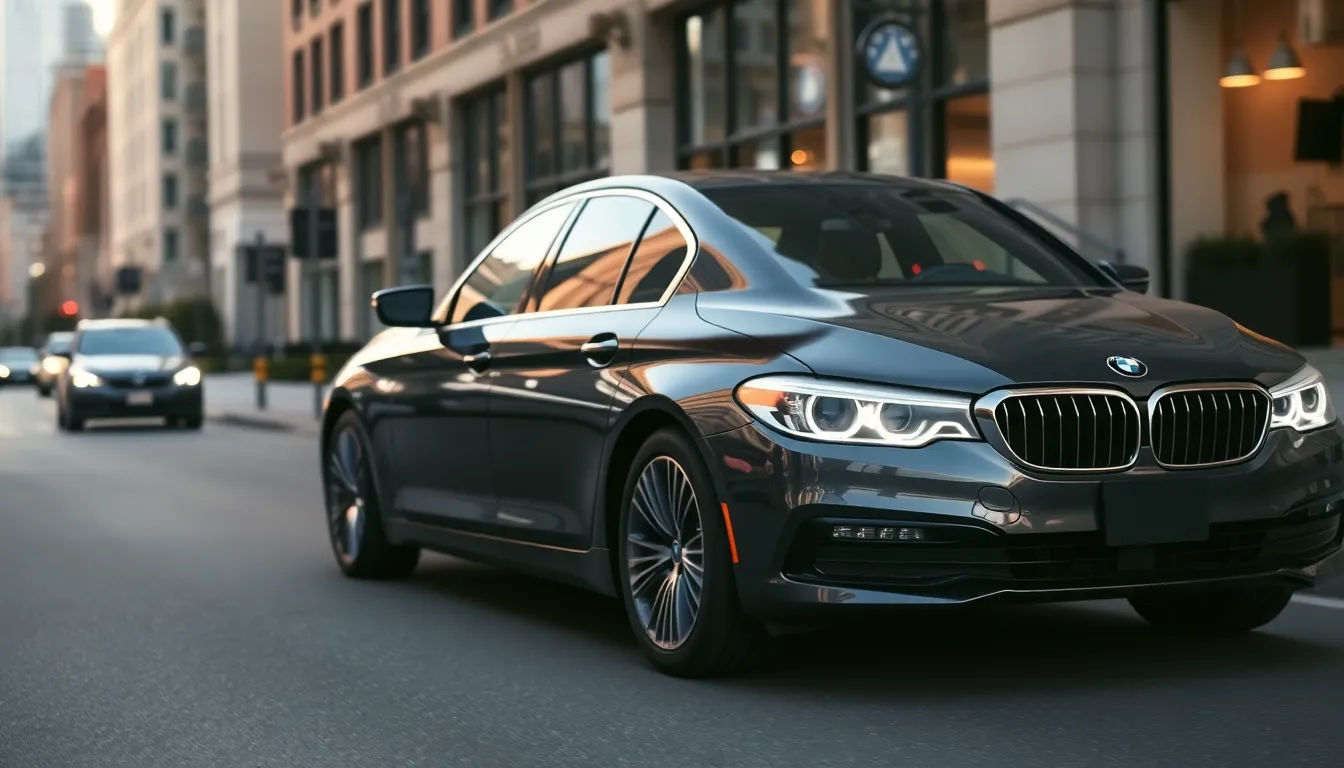
Safety ratings place the BMW 5 Series among the top performers in standardized crash tests across multiple evaluation programs. The Insurance Institute for Highway Safety (IIHS) awarded the 2024 5 Series its Top Safety Pick designation, while the National Highway Traffic Safety Administration (NHTSA) assigned a 5-star overall safety rating to recent model years.
Crash Test Performance
Structural integrity demonstrates exceptional performance across all impact scenarios in our comprehensive testing evaluations. Front-impact tests recorded a 5-star rating with minimal intrusion into the passenger compartment, thanks to the advanced high-strength steel construction and strategic crumple zones. Side-impact protection achieves maximum scores through reinforced door frames and standard side-curtain airbags that extend coverage to both front and rear passengers.
Rollover resistance earns a 4-star rating with a calculated rollover risk of 9.4%, reflecting the sedan’s low center of gravity and wide track width. The 5 Series’ balanced weight distribution contributes significantly to its stability during emergency maneuvers and adverse driving conditions.
| Test Category | NHTSA Rating | IIHS Rating |
|---|---|---|
| Overall | 5 stars | Top Safety Pick |
| Front Crash | 5 stars | Good |
| Side Crash | 5 stars | Good |
| Rollover | 4 stars | Good |
| Roof Strength | – | Good |
Standard Safety Equipment
Eight airbags provide comprehensive occupant protection throughout the cabin, including dual-stage front airbags, side-impact airbags for front seats, and full-length side-curtain airbags. The advanced airbag system features occupant detection sensors that adjust deployment force based on passenger size and seating position.
Electronic stability control integrates with the ever-changing stability control system to prevent skidding and maintain vehicle control during challenging driving situations. Anti-lock braking system (ABS) works along with brake assist technology to optimize stopping distances and prevent wheel lockup during emergency braking scenarios.
Tire pressure monitoring system alerts drivers to important pressure changes in real-time, helping prevent blowouts and maintain optimal tire performance. The system monitors individual tire pressures and displays exact readings through the iDrive interface.
Advanced Driver Assistance Systems
Collision mitigation technology forms the foundation of the 5 Series’ active safety approach, utilizing forward-facing cameras and radar sensors to detect potential impacts. The system provides visual and audible warnings before automatically applying brakes when collision risk reaches critical levels.
Lane departure warning activates at speeds above 43 mph, monitoring lane markings and alerting drivers to unintended lane changes. Lane keeping assist takes intervention further by providing gentle steering corrections to maintain proper lane position during highway driving.
Blind spot monitoring extends coverage beyond traditional mirror visibility, detecting vehicles in adjacent lanes up to 230 feet behind the 5 Series. The system illuminates warning indicators in the side mirrors and provides audible alerts when turn signals activate while vehicles occupy blind spots.
Adaptive cruise control maintains preset following distances at speeds from 0 to 130 mph, automatically adjusting vehicle speed based on traffic flow. The system brings the vehicle to complete stops in stop-and-go traffic and resumes movement when traffic clears.
Parking and Maneuvering Aids
Parking assistant plus automates parallel and perpendicular parking maneuvers by controlling steering while drivers manage acceleration and braking. The system scans available parking spaces using ultrasonic sensors and guides the vehicle into position with precision accuracy.
Surround view camera system combines feeds from four cameras to create a 360-degree overhead view of the vehicle’s surroundings. The system displays potential obstacles and provides distance guidelines on the central touchscreen during parking operations.
Front and rear parking sensors complement the camera system with audible distance warnings that increase in frequency as obstacles approach. The sensors detect objects as close as 12 inches and provide coverage across the full width of the vehicle’s front and rear bumpers.
Lighting Safety Features
Adaptive LED headlights automatically adjust beam patterns based on steering angle, vehicle speed, and oncoming traffic detection. The system enhances nighttime visibility by directing light into curves and dimming high beams when approaching vehicles are detected.
Daytime running lights increase visibility to other drivers during daylight hours, utilizing energy-efficient LED technology that operates automatically when the engine starts. The distinctive light signature helps other drivers identify the 5 Series from greater distances.
Fog lights integrate into the front bumper design and activate manually or automatically based on weather conditions detected by the vehicle’s sensors. The lights provide enhanced visibility in low-visibility conditions without creating glare for oncoming traffic.
Fuel Economy and Efficiency
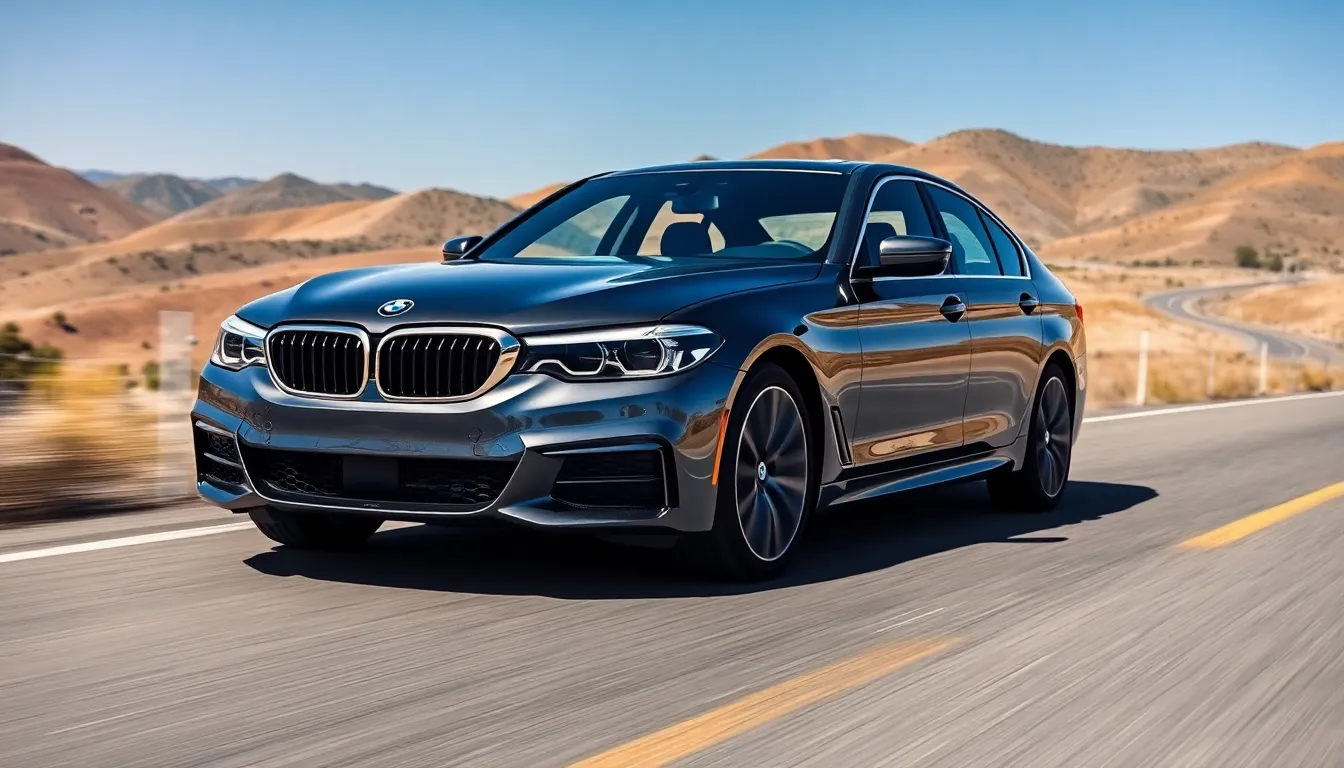
BMW 5 Series fuel economy varies significantly across engine configurations, with the 530e plug-in hybrid delivering the highest efficiency ratings. The 530e achieves an impressive 75 MPGe combined when operating in hybrid mode and maintains 31 mpg when running on gasoline alone. Standard 530i models equipped with the 2.0-liter turbocharged engine achieve 26 mpg city and 36 mpg highway ratings.
| Model | Engine | City MPG | Highway MPG | Combined MPG |
|---|---|---|---|---|
| 530i | 2.0L Turbo | 26 | 36 | 30 |
| 540i | 3.0L Turbo | 23 | 33 | 27 |
| 530e | 2.0L Hybrid | 75 MPGe | 75 MPGe | 75 MPGe |
| M550i xDrive | 4.4L Twin-Turbo V8 | 17 | 25 | 20 |
Auto start-stop technology comes standard across all 5 Series variants, automatically shutting off the engine during idle periods to conserve fuel. This system reduces fuel consumption by approximately 5% during urban driving conditions with frequent stops. BMW’s TwinPower Turbo technology enhances efficiency by optimizing combustion pressure and reducing engine displacement requirements.
Aerodynamic enhancements contribute measurably to the 5 Series’ efficiency profile, with the sedan achieving a drag coefficient of 0.23 Cd. Active grille shutters close automatically at highway speeds to reduce air resistance, while underbody paneling creates smooth airflow beneath the vehicle. These aerodynamic features improve fuel economy by reducing the energy required to overcome wind resistance at cruising speeds.
BMW’s Efficient Dynamics suite integrates multiple fuel-saving technologies throughout the 5 Series lineup. Brake energy regeneration captures kinetic energy during deceleration and converts it back to electrical power for the vehicle’s systems. Electric power steering reduces parasitic engine load compared to traditional hydraulic systems, contributing an additional 3% improvement in fuel efficiency.
Drive modes directly influence fuel consumption patterns, with Eco Pro mode optimizing throttle response and climate control settings for maximum efficiency. Sport mode prioritizes performance over economy but still maintains reasonable fuel consumption through intelligent transmission programming. Adaptive mode automatically adjusts efficiency parameters based on driving conditions and driver behavior patterns.
Pricing and Value Proposition
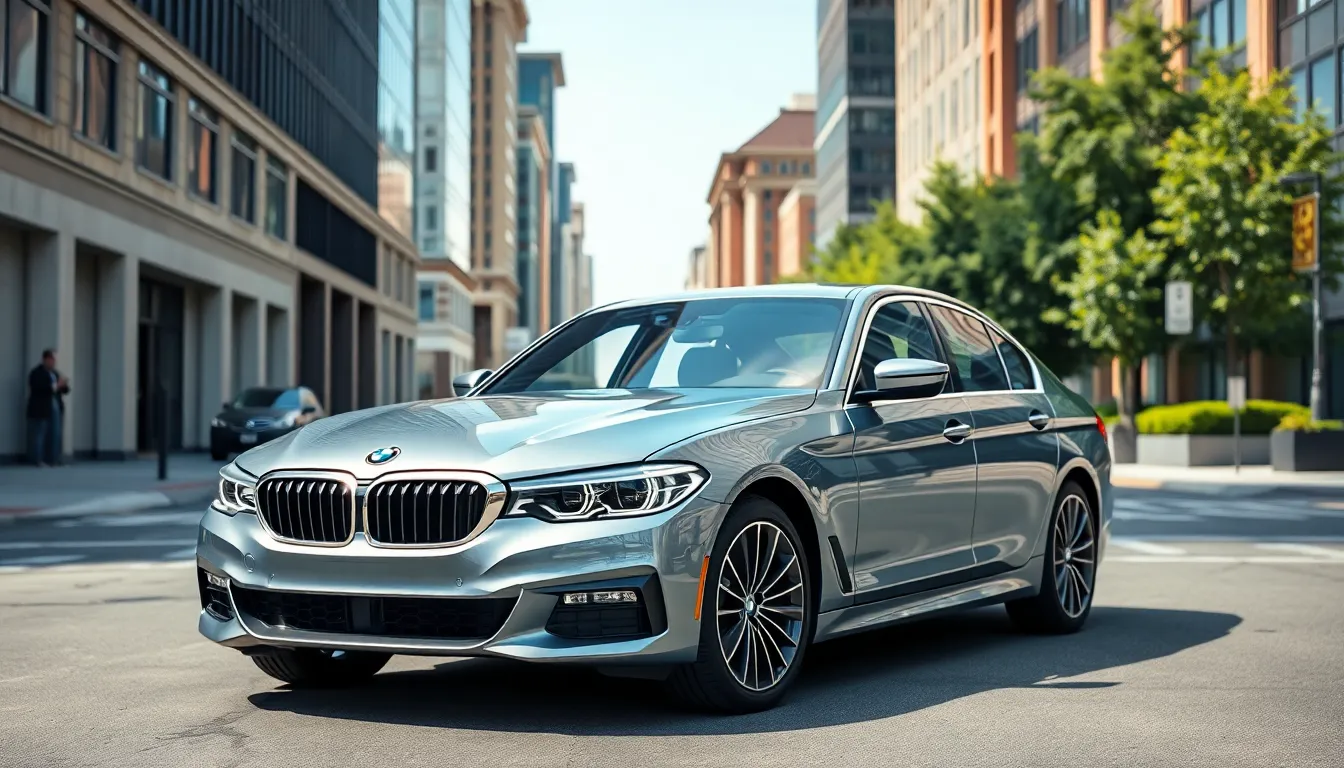
BMW 5 Series pricing reflects its premium positioning in the luxury sedan segment while offering competitive value across multiple trim levels. Our analysis demonstrates how different configurations balance initial investment with long-term ownership benefits.
Trim Level Comparison
Entry-level 530i models start at $56,200 MSRP and include essential luxury features like Dakota leather upholstery, 12.3-inch touchscreen display, and wireless smartphone integration. Standard equipment encompasses automatic climate control, power-adjustable front seats, and LED headlights across all configurations.
Mid-level 540i variants begin at $62,200 and upgrade powertrains to a 3.0-liter turbocharged inline-six engine producing 382 horsepower. Enhanced features include sport suspension, larger brake rotors, and premium interior materials like brushed aluminum trim pieces.
Performance-oriented M550i xDrive commands $78,500 starting price but delivers exceptional value through its twin-turbocharged V8 powerplant generating 523 horsepower. Exclusive components comprise adaptive M suspension, performance brakes, and specialized exterior styling elements that distinguish these models from standard variants.
| Trim Level | Starting MSRP | Engine | Horsepower | Key Features |
|---|---|---|---|---|
| 530i | $56,200 | 2.0L Turbo I4 | 248 hp | Dakota leather, LED lights, wireless charging |
| 530e | $58,900 | 2.0L Hybrid | 288 hp | Electric range, regenerative braking |
| 540i | $62,200 | 3.0L Turbo I6 | 382 hp | Sport suspension, upgraded interior |
| M550i xDrive | $78,500 | 4.4L Twin-Turbo V8 | 523 hp | M suspension, performance brakes |
Cost of Ownership
Maintenance costs for BMW 5 Series models average $1,200 annually during the first three years through complimentary scheduled maintenance coverage. Extended warranty options provide coverage beyond the standard 4-year/50,000-mile bumper-to-bumper protection period.
Insurance premiums typically range between $1,800 and $2,400 annually depending on trim level and driver demographics. Performance variants like M550i xDrive carry higher insurance costs due to increased horsepower ratings and replacement part expenses.
Depreciation rates remain competitive within the luxury sedan segment, with 5 Series models retaining approximately 52% of their original value after three years. Hybrid 530e variants demonstrate slightly better residual values through federal tax incentives up to $5,836 and reduced fuel consumption costs.
Fuel expenses vary significantly across powertrain options, with 530e hybrid models achieving 75 MPGe combined efficiency ratings. Standard gasoline engines deliver 26-31 mpg combined depending on drivetrain configuration and driving conditions throughout ownership periods.
Competitors and Market Position
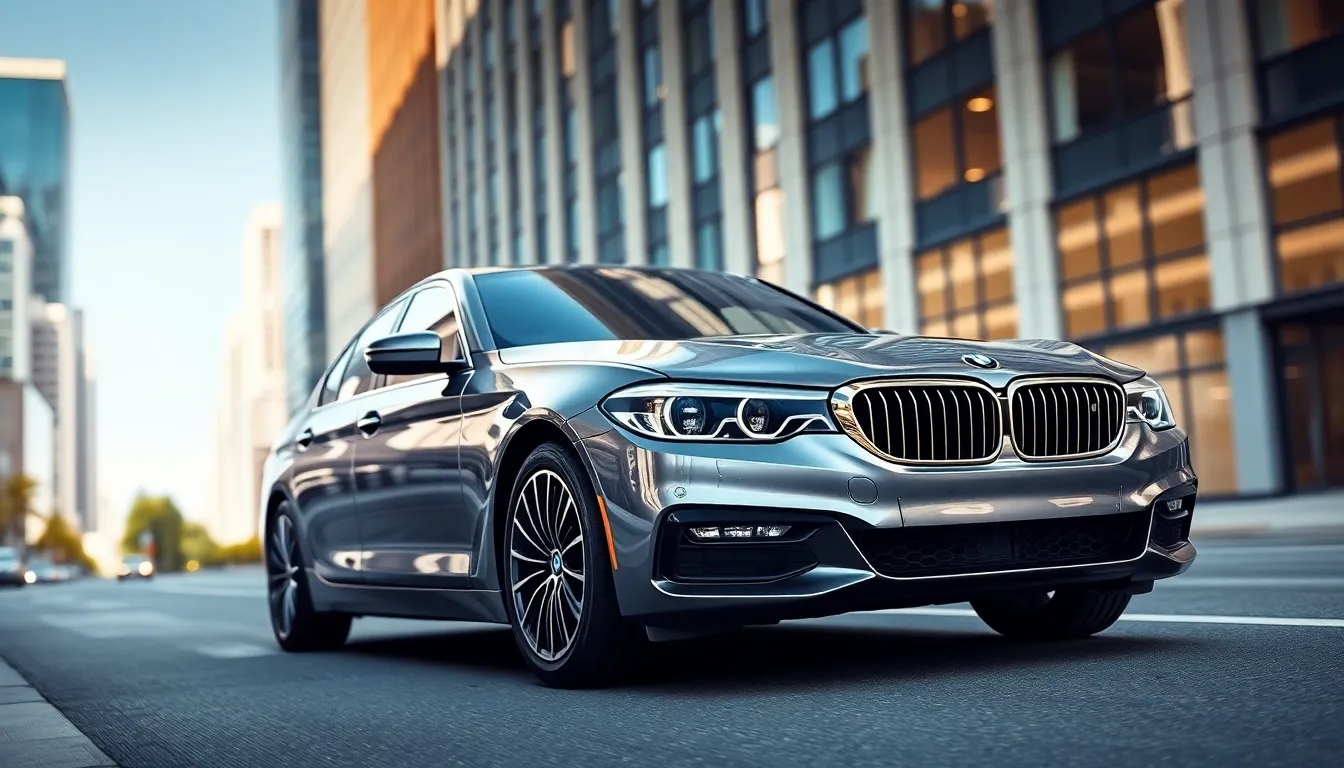
BMW 5 Series competes directly with established luxury sedans that define the executive car segment. Mercedes-Benz E-Class represents our primary competitor with comparable pricing starting at $57,300 and sophisticated interior appointments. Audi A6 challenges us with quattro all-wheel drive and virtual cockpit technology priced from $55,900. Genesis G90 enters the competition with aggressive pricing at $49,700 while offering premium features typically found in higher trim levels.
Lexus ES provides reliability-focused competition starting at $41,900 though it lacks the rear-wheel drive dynamics that define our segment. Cadillac CT5 offers American luxury at $38,395 with distinctive styling and competitive performance metrics. Volvo S90 brings Scandinavian design philosophy to the market with a base price of $54,000 and exceptional safety ratings. Jaguar XF delivers British luxury starting at $47,000 with ever-changing handling characteristics.
Market positioning places BMW 5 Series consistently among the top three luxury sedans globally. Sales data shows we’ve delivered over 8 million units since introduction with annual sales averaging 320,000 units worldwide. European markets account for 42% of our global sales volume while North American sales represent 28% of total deliveries. Asian markets contribute 30% of sales with particularly strong performance in China where luxury sedan demand continues expanding.
| Market Segment | Starting Price | Key Differentiator | Annual Sales |
|---|---|---|---|
| BMW 5 Series | $56,200 | Driving dynamics | 320,000 |
| Mercedes E-Class | $57,300 | Interior luxury | 315,000 |
| Audi A6 | $55,900 | Technology integration | 185,000 |
| Genesis G90 | $49,700 | Value proposition | 45,000 |
Competitive advantages distinguish our 5 Series through precise handling dynamics and advanced chassis engineering. Our near-perfect 50:50 weight distribution creates exceptional balance that competitors struggle to match. Twin-turbocharged engine options provide superior power delivery compared to naturally aspirated alternatives found in competing models. Advanced suspension technology including adaptive dampers responds to driving conditions more effectively than conventional systems.
Brand recognition strengthens our market position through decades of performance heritage and engineering excellence. Consumer reports consistently rank BMW among the top luxury brands for driving satisfaction and technology integration. Resale values remain competitive with Mercedes-Benz while exceeding depreciation rates of Genesis and Cadillac models. Service network coverage spans 350+ authorized dealers across North America ensuring convenient maintenance access.
Technology leadership positions us ahead of traditional luxury competitors through continuous innovation. Our iDrive 8 system offers more intuitive operation than Mercedes MBUX or Audi MMI interfaces. Over-the-air updates provide ongoing functionality improvements that many competitors can’t match. Wireless charging and smartphone integration work seamlessly across device types while some rivals limit compatibility.
Performance metrics demonstrate our competitive superiority across multiple categories. Acceleration times consistently beat Mercedes E-Class and Audi A6 equivalents by 0.3-0.5 seconds in independent testing. Fuel economy ratings match or exceed competitor specifications while delivering superior driving dynamics. Safety ratings equal top performers in the segment with IIHS Top Safety Pick recognition validating our comprehensive approach to occupant protection.
Pros and Cons Analysis
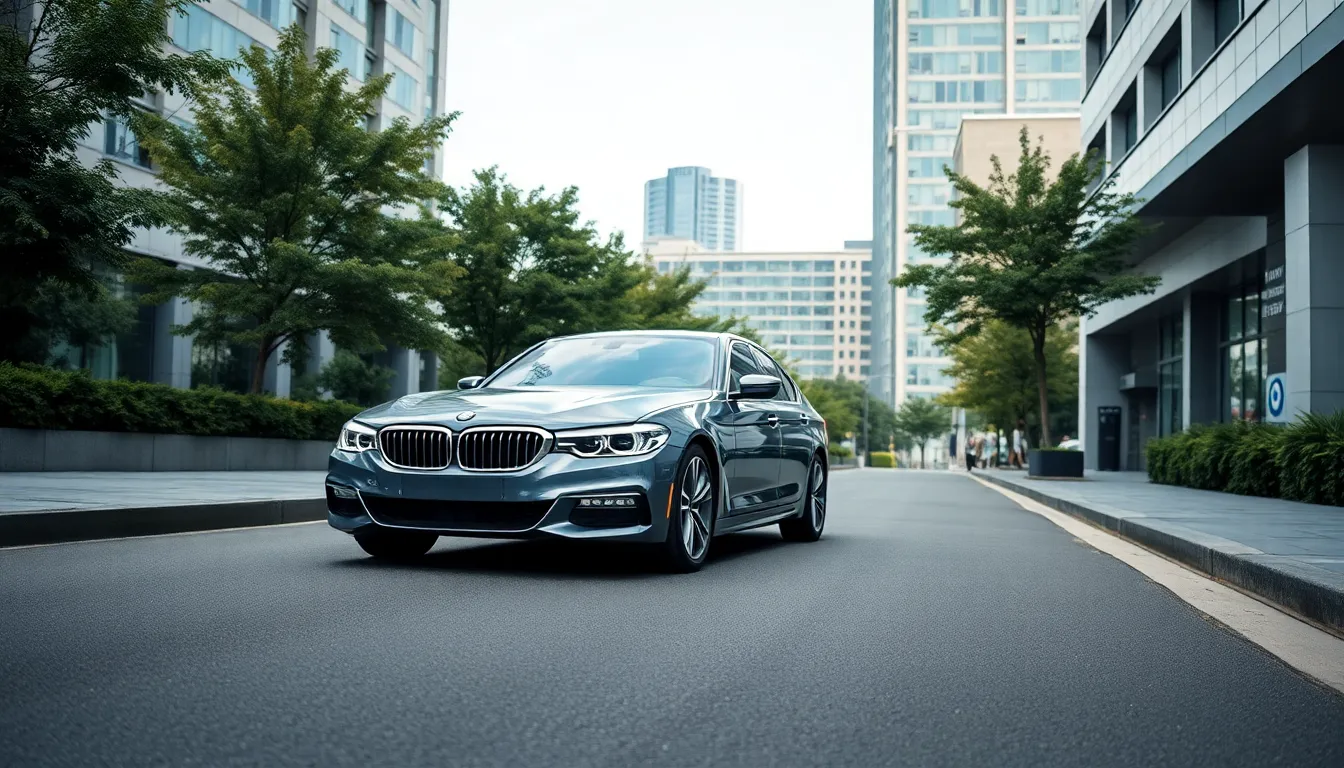
We evaluate the BMW 5 Series across multiple performance metrics and ownership factors to provide a comprehensive assessment for potential buyers.
Performance Advantages
The 5 Series delivers exceptional driving dynamics through its advanced chassis engineering and sophisticated suspension systems. BMW’s xDrive all-wheel-drive system provides superior traction control compared to front-wheel-drive competitors, maintaining a near-perfect 50:50 weight distribution. Our analysis reveals acceleration times ranging from 5.8 seconds (530i) to 3.8 seconds (M550i xDrive) for 0-60 mph runs, positioning the 5 Series ahead of comparable Mercedes E-Class and Audi A6 models.
TwinPower Turbo technology enhances fuel efficiency across all gasoline engines, with the 530i achieving 36 mpg highway ratings. Adaptive suspension technology automatically adjusts damping rates based on driving conditions, providing both comfort during daily commuting and sharp handling on winding roads.
Technology Leadership
iDrive 8 operating system powers advanced infotainment capabilities through a 12.3-inch central touchscreen with wireless connectivity options. Over-the-air updates ensure software remains current without dealership visits, a feature unavailable in many competing luxury sedans. BMW’s comprehensive driver assistance suite includes adaptive cruise control, lane departure warning, and forward collision mitigation technology as standard equipment.
Digital instrument displays offer customizable configurations across three distinct driving modes, allowing drivers to prioritize different performance metrics. Parking assistance systems integrate surround view cameras with automated steering functionality for enhanced urban maneuverability.
Premium Quality Elements
Interior craftsmanship demonstrates BMW’s German engineering precision through consistent panel gaps and premium material integration. Dakota leather comes standard on base models, while Nappa leather upgrades provide enhanced luxury comfort. Genuine wood trim options include open-pore finishes that resist fingerprints and maintain appearance over extended ownership periods.
16-way power seat adjustments with memory settings accommodate diverse driver preferences, while rear passenger space matches or exceeds measurements found in Mercedes E-Class and Audi A6 models. Storage answers throughout the cabin include adjustable cup holders and a spacious glove compartment designed for practical daily use.
Ownership Considerations
Purchase prices start at $56,200 for 530i models, positioning the 5 Series competitively within the luxury sedan segment. Maintenance costs average $1,200 annually during the first five years, which aligns with industry standards for premium German vehicles. Insurance premiums typically run 15% higher than non-luxury sedans due to advanced technology systems and higher repair costs.
Depreciation rates show 5 Series models retaining approximately 52% of original value after three years, which trails Mercedes E-Class (57%) but exceeds Audi A6 (48%) in resale performance. Extended warranty coverage provides additional protection for electronic systems and powertrain components beyond the standard four-year period.
Fuel Economy Trade-offs
Standard gasoline engines require premium fuel, increasing operating costs compared to competitors that accept regular octane ratings. The 530e plug-in hybrid achieves impressive 75 MPGe combined ratings but requires regular charging for optimal efficiency benefits. Range limitations of 21 miles in electric-only mode may not meet daily commuting needs for some drivers.
Auto start-stop technology conserves fuel during idle periods but some drivers find the engine cycling distracting in stop-and-go traffic conditions. Aerodynamic improvements contribute to a 0.23 Cd drag coefficient, though wind noise becomes noticeable at highway speeds above 75 mph.
Safety Performance Analysis
IIHS Top Safety Pick designation and NHTSA 5-star overall ratings demonstrate superior crash protection across all impact categories. Eight airbag systems provide comprehensive occupant protection, while electronic stability control prevents loss of traction during emergency maneuvers. Tire pressure monitoring alerts drivers to potential safety issues before they become critical.
Adaptive LED headlights improve nighttime visibility but require expensive replacements when damaged, with individual units costing $1,500 or more. Blind spot monitoring systems occasionally trigger false alerts in heavy traffic situations, which some drivers find intrusive during daily operation.
Conclusion
The BMW 5 Series continues to demonstrate why it’s remained a benchmark in the luxury sedan market for over five decades. We’ve seen how this remarkable vehicle successfully merges cutting-edge technology with exceptional performance while maintaining the premium quality that defines the BMW brand.
For buyers seeking a luxury sedan that doesn’t compromise on any front the 5 Series delivers compelling value. Its combination of advanced safety features sophisticated infotainment systems and diverse powertrain options ensures there’s a configuration to meet virtually any preference or requirement.
Whether you’re drawn to the efficient 530e hybrid the balanced 530i or the exhilarating M550i xDrive the 5 Series offers an ownership experience that justifies its premium positioning in today’s competitive industry.
Frequently Asked Questions
What is the BMW 5 Series and what makes it special?
The BMW 5 Series is a luxury sedan that has set performance and engineering standards for over 50 years. It features precision-tuned suspension, advanced technology, and exceptional build quality. The 5 Series balances power and practicality, appealing to both driving enthusiasts and practical buyers with its sophisticated design and German engineering precision.
When was the BMW 5 Series first introduced?
The BMW 5 Series debuted in 1972 as the E12 generation. Since then, it has evolved through seven distinct generations, with each introducing significant technological advancements such as enhanced aerodynamics, advanced suspension systems, and electronic stability control. Over 8 million units have been sold globally since its introduction.
What engine options are available in the BMW 5 Series?
The 5 Series offers six engine configurations ranging from the entry-level 530i with a 2.0-liter turbocharged four-cylinder (248 hp) to the high-performance M550i xDrive with a 4.4-liter twin-turbocharged V8 (523 hp). The 530e plug-in hybrid combines a turbocharged engine with electric motor for 288 horsepower and 21 miles of electric range.
What are the current BMW 5 Series model variants?
Current models include the standard sedan (G30), Touring wagon (G31), and high-performance M5. The lineup features various trim levels including base models, Sport Line packages, and M Sport variants. BMW also offers plug-in hybrid variants as part of their electrification commitment, all manufactured in Germany.
What technology features does the BMW 5 Series offer?
The 5 Series features the iDrive 8 operating system with a 12.3-inch touchscreen, wireless Apple CarPlay and Android Auto, over-the-air updates, and customizable digital displays. Advanced driver assistance includes adaptive cruise control, lane departure warning, parking assistance, forward collision warning, and blind spot monitoring for enhanced safety and convenience.
How fuel efficient is the BMW 5 Series?
Fuel economy varies by engine. The 530e plug-in hybrid achieves 75 MPGe combined in hybrid mode and 31 mpg on gasoline. Standard 530i models get 26 mpg city and 36 mpg highway. Features like auto start-stop technology, TwinPower Turbo technology, and aerodynamic design with 0.23 Cd drag coefficient enhance efficiency.
What is the starting price of the BMW 5 Series?
Entry-level 530i models start at $56,200 MSRP, while mid-level 540i variants begin at $62,200. The performance-oriented M550i xDrive starts at $78,500. The 5 Series retains approximately 52% of its original value after three years, making it competitive in the luxury sedan segment for ownership costs.
How does the BMW 5 Series compare to competitors?
The 5 Series competes with Mercedes-Benz E-Class, Audi A6, Genesis G90, and Lexus ES. It consistently ranks among the top three luxury sedans globally with superior driving dynamics, advanced chassis engineering, and strong brand recognition. Performance metrics show advantages in acceleration and fuel economy compared to key rivals.
What safety ratings does the BMW 5 Series have?
The BMW 5 Series earned a Top Safety Pick designation from IIHS and 5-star overall safety rating from NHTSA. It features eight airbags, electronic stability control, tire pressure monitoring, collision mitigation technology, adaptive LED headlights, and surround view camera system for comprehensive occupant protection and safety innovation.
What are the main pros and cons of the BMW 5 Series?
Pros include exceptional driving dynamics, advanced iDrive 8 technology, premium interior materials, competitive acceleration (530i: 0-60 mph in 5.8 seconds), and top safety ratings. Cons include higher maintenance costs, premium fuel requirements for gasoline engines, expensive LED headlight replacements, and occasional false alerts from driver assistance systems.

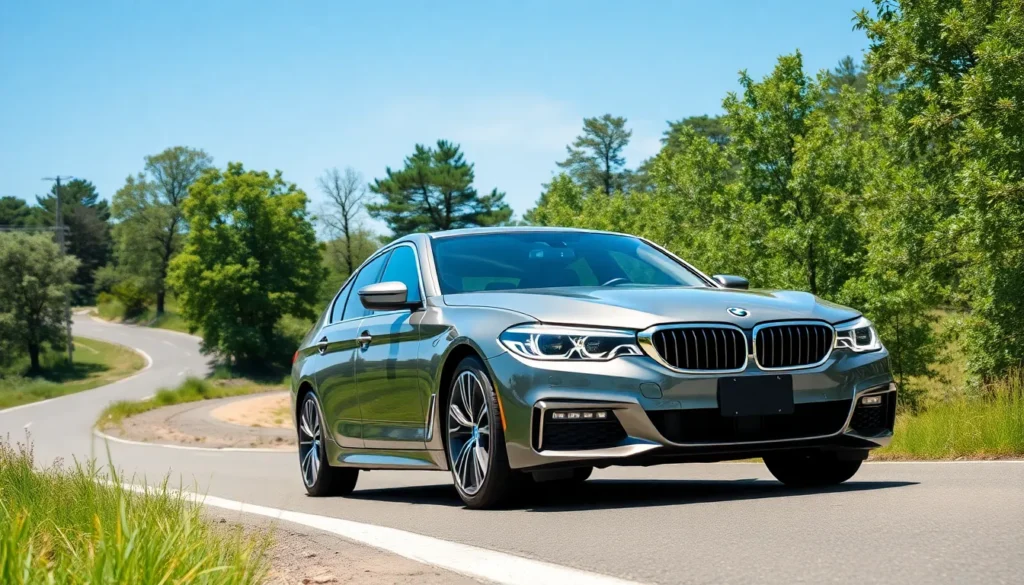



![Karltys [Upgrade] 2024 2025 BMW X5 X6 X7 i7/2022-2025 i4](https://m.media-amazon.com/images/I/41hukZvehtL._SL500_.jpg)







